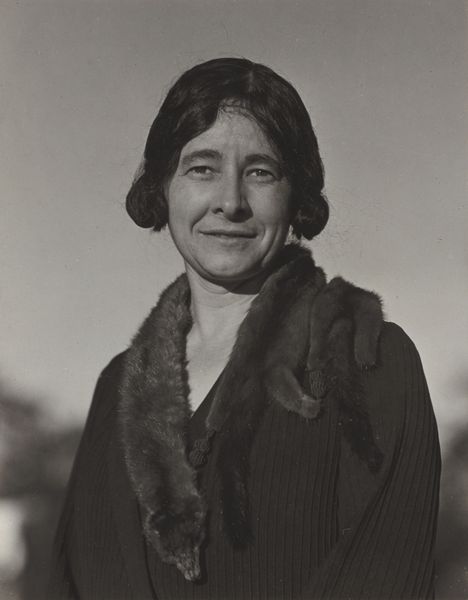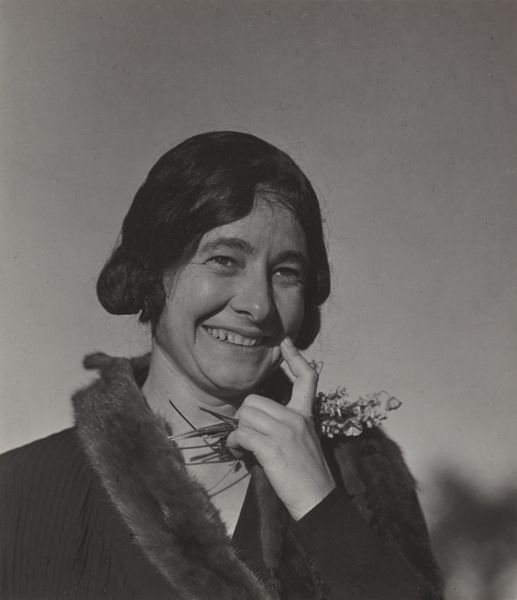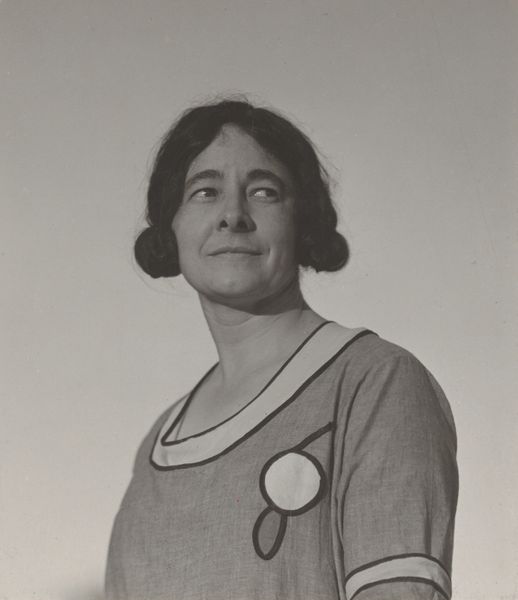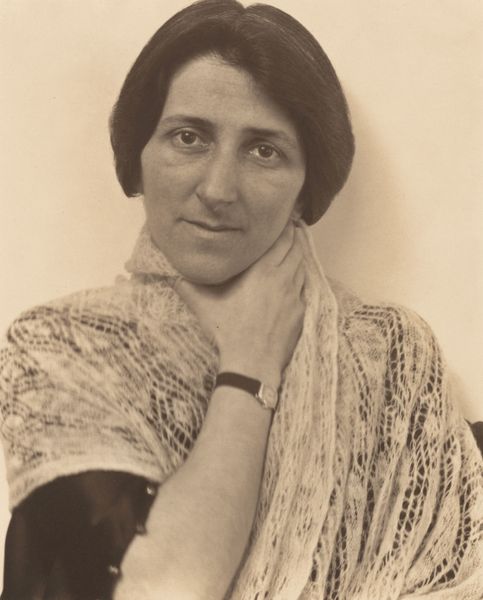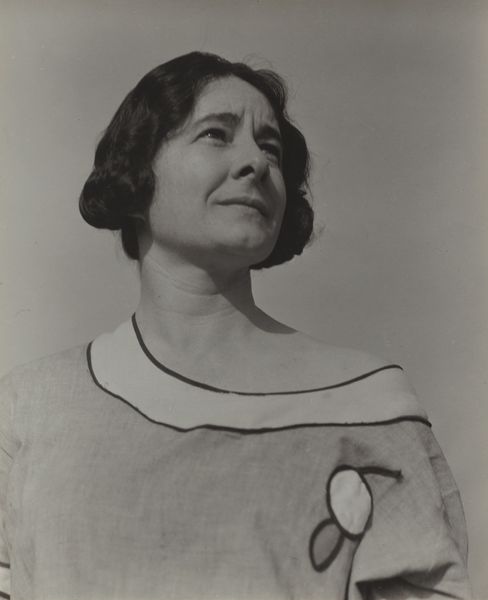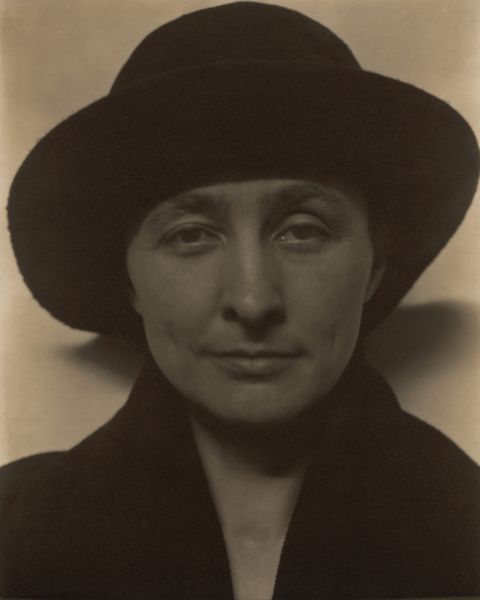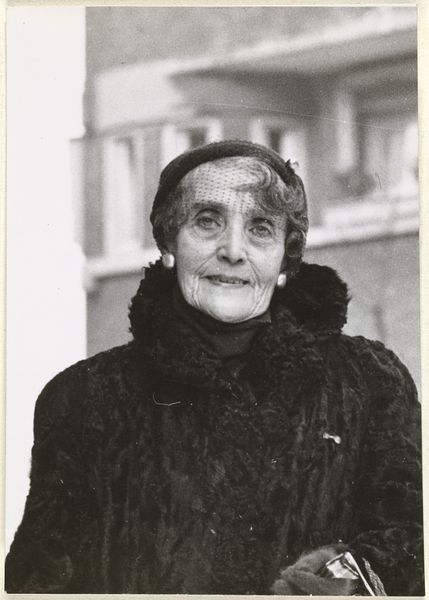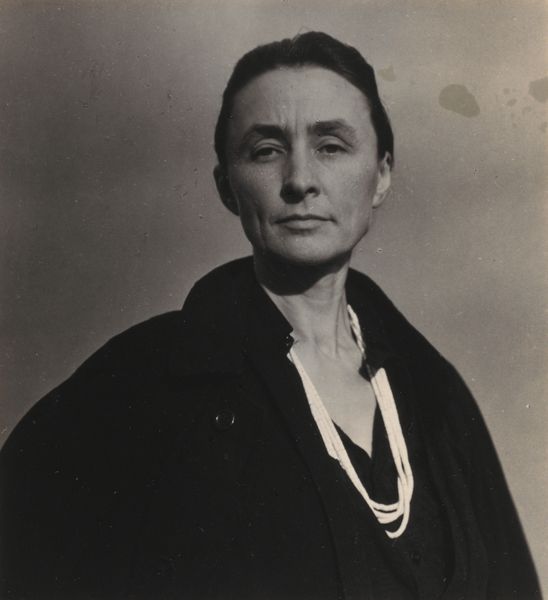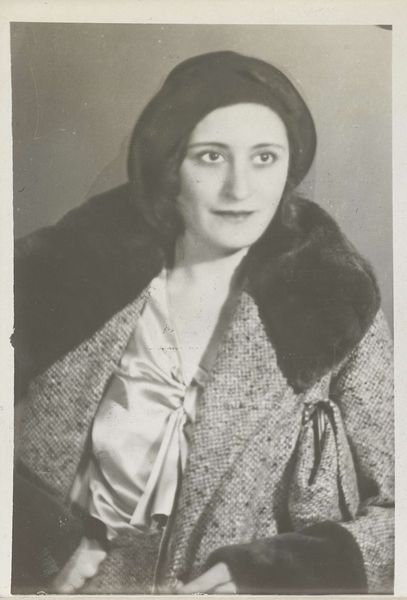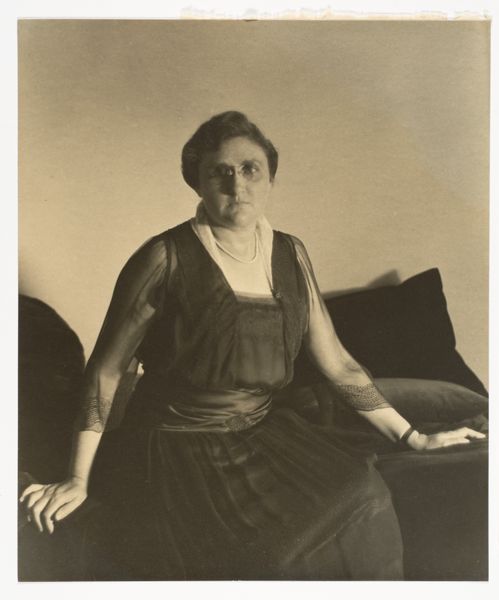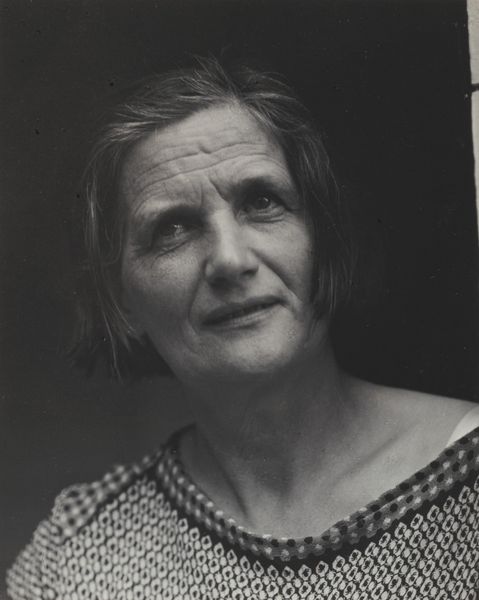
photography
#
portrait
#
low key portrait
#
portrait image
#
pictorialism
#
portrait
#
portrait subject
#
black and white format
#
photography
#
portrait reference
#
portrait head and shoulder
#
single portrait
#
modernism
#
celebrity portrait
#
digital portrait
Dimensions: sheet (trimmed to image): 11.5 × 9.2 cm (4 1/2 × 3 5/8 in.) mount: 34.3 × 27.5 cm (13 1/2 × 10 13/16 in.)
Copyright: National Gallery of Art: CC0 1.0
Editor: This photograph, "Ida O'Keeffe," was taken by Alfred Stieglitz in 1924. It's a portrait, and the first thing that strikes me is the texture – the fur stole, the flowers, the soft folds of her dress. What draws your attention when you look at this image? Curator: I'm immediately drawn to the material realities embedded within this image. Think about the fur, a clear indicator of social status and a product of specific labor practices of hunting and processing. How does the act of Stieglitz capturing this moment on film, using specific photographic technologies available in 1924, contribute to the commodification and consumption of identity? Editor: So, you're saying that the photograph itself becomes an object tied to systems of production and class? Curator: Exactly. The photographic process isn’t neutral; it involves specific materials – the camera, the film, the darkroom chemicals – each contributing to the final product and reflecting the era’s industrial capabilities. And let’s consider the labor involved, both in producing the photograph and in Ida O'Keeffe’s own life and work, outside of being a model. How does that impact our reading of the image? Editor: That's a perspective I hadn’t considered. I was so focused on the personal connection between Stieglitz and the O'Keeffe sisters, but you're right. The photograph is also a material object shaped by very specific social and economic forces. Curator: By examining the material processes and the social context surrounding this portrait, we gain a deeper understanding of its cultural value beyond simply a depiction of an individual. Editor: I definitely see that now. Thanks to your perspective, I learned a new way to examine how making an artwork changes its meaning.
Comments
No comments
Be the first to comment and join the conversation on the ultimate creative platform.
